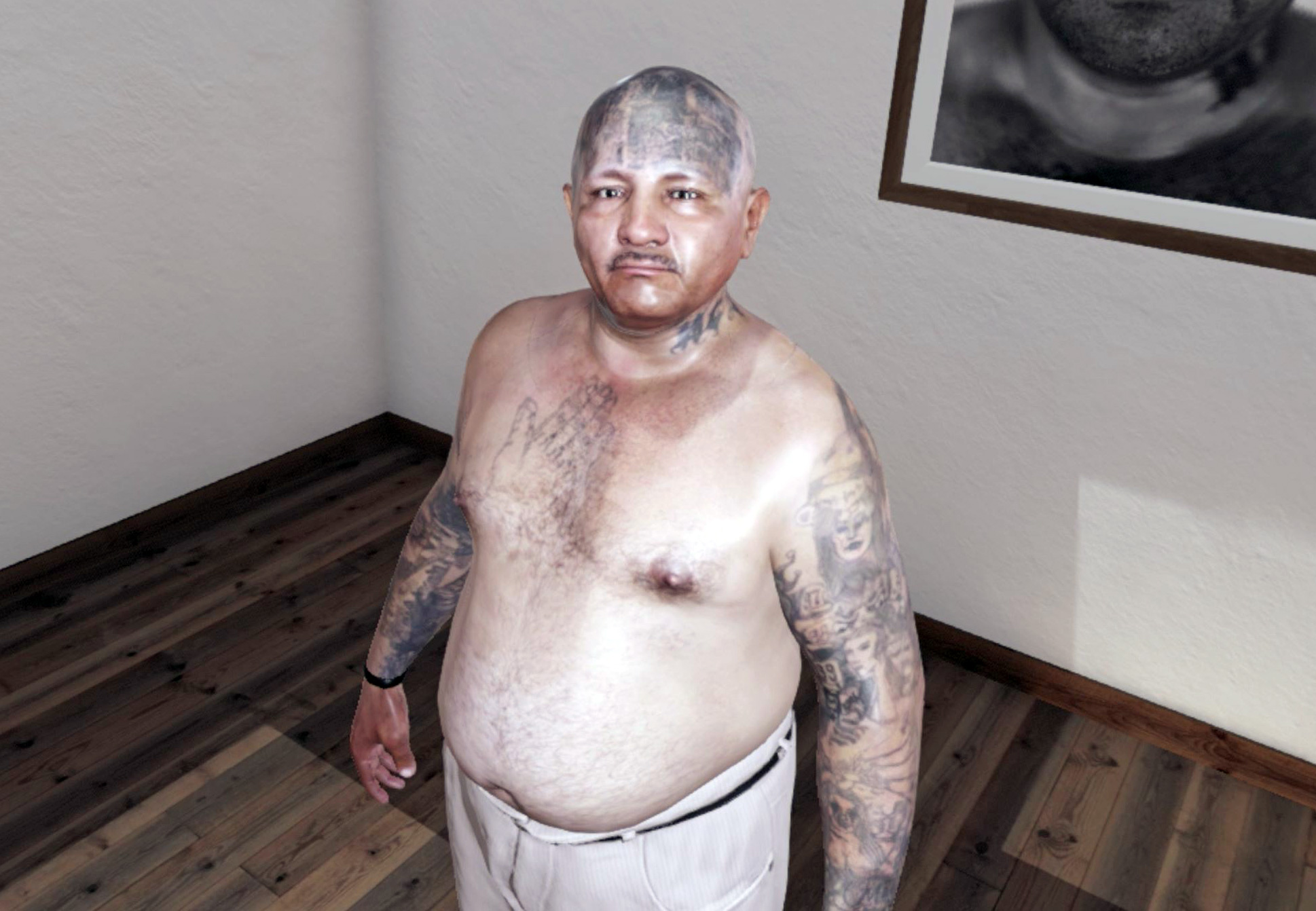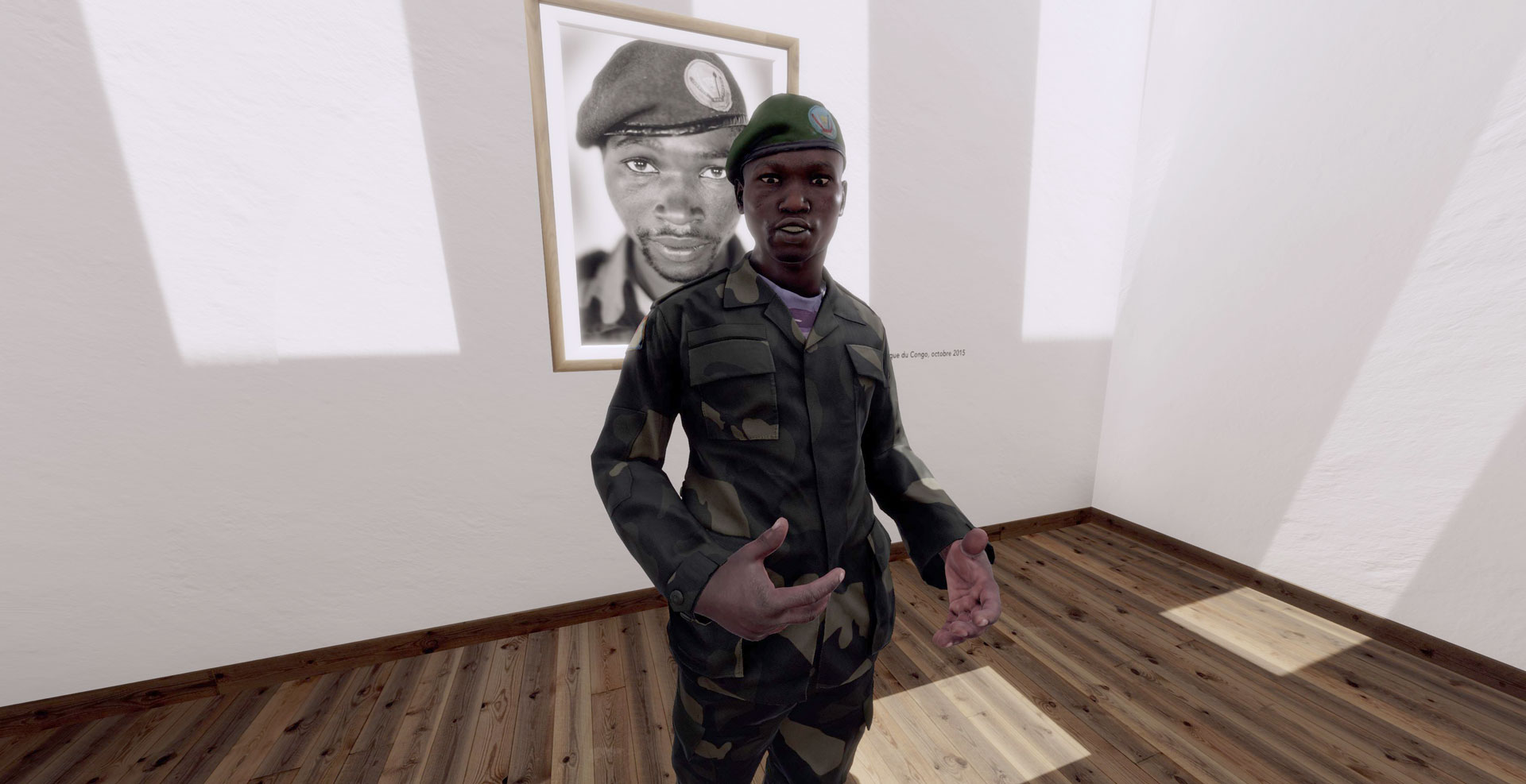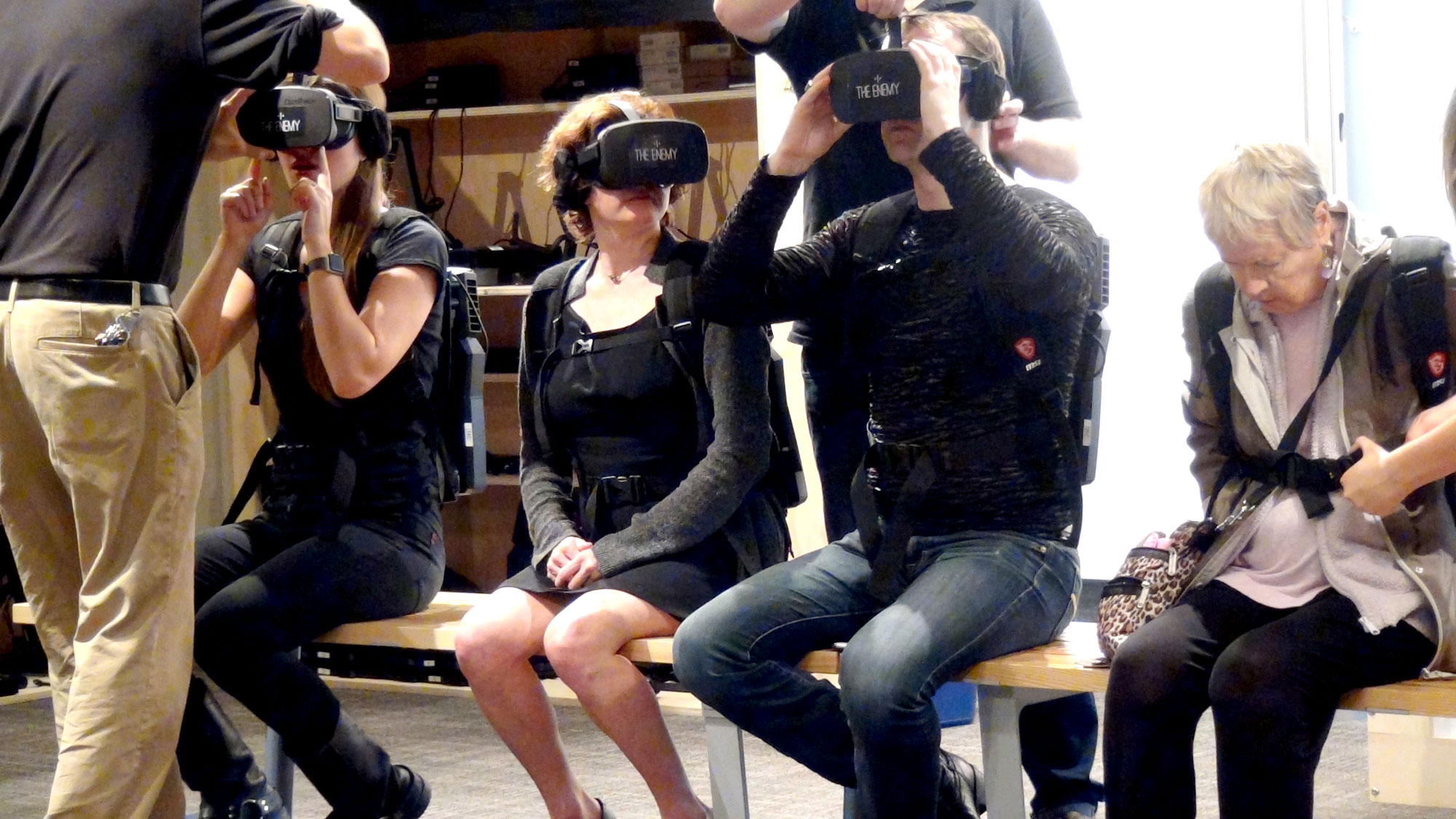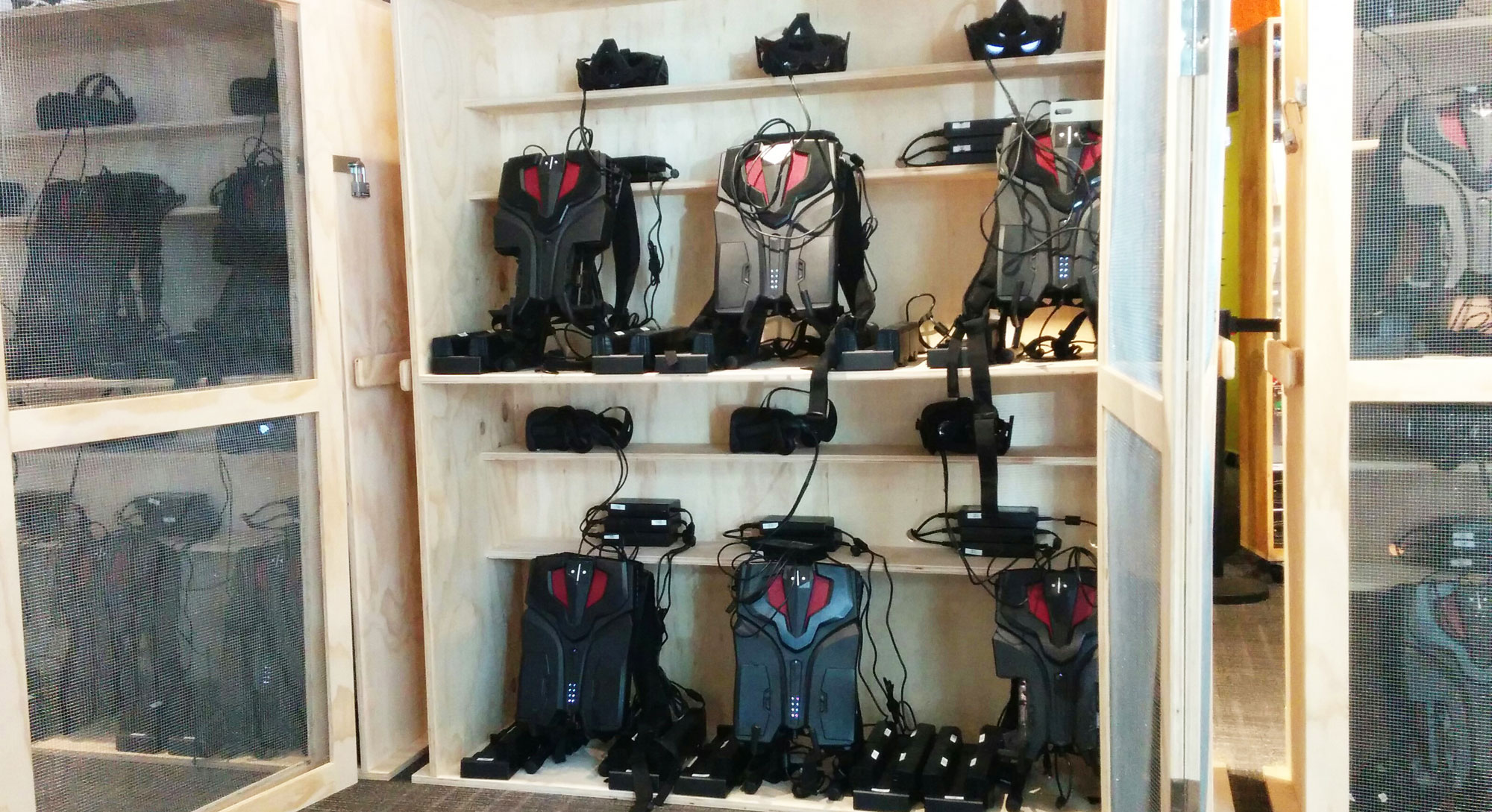THE ENEMY
Making Of
Par Fabien Barati – Part 6/7
The user experience
Journalistic constraints
I am fascinated about how stories can be told through interactive experiences, by predicting and guiding the audience’s behaviour. But The Enemy is the first project for which we didn’t fully design the user’s experience ourselves, and I felt unsettled at the beginning of production because of a major constraint defined by Karim: journalistic ethics. Indeed, each of the virtual combatants’ gestures and words must be modelled on their real self; there is no room for interpretation or imagination. As someone who is constantly seeking to involve users through interaction, I felt very limited under these rules.
However, once I understood and integrated this constraint into my process, I began to see it more as a formidable strength, an unambiguous editorial and artistic line to work by. Particularly because there were many other questions we needed to answer: in which settings does the user meet the combatants? How are they positioned? How does the user get face to face with them? How are they introduced?
The challenge was all the more complex that VR was still in its infancy, and we could only guess how visitors would react to our conceptual choices. Would they understand what was being asked of them? And more importantly, would they understand the message conveyed by the combatants?
Strong choices
Many tests and modifications were undertaken to lead to the final experience: with the VR headset, you get an introduction to the experience while sitting, before getting up to visit 3 plain rooms representing the 3 conflicts. These are decorated with contextual elements about the combatants and their country (with photos by Karim) that can be observed before the combatants arrive, creating a surprise element. You can listen to them by getting closer. The Enemy’s conclusion is customised to each visitor through behavioural analysis.
Between these lines, a thousand details have been scattered to achieve the best possible user experience: the combatants’ gestures towards you, their retreat movement if you get too close, the simultaneous translation of their speech, the lighting in each room, even the timing of each action is set, down to the second.
The environment has evolved from a dark room to bright clean rooms, with more experimental architectural styles. The users’ avatars have also grown into simple and ghostly silhouettes to help put the emphasis on the combatants.
Based on Karim’s ideas, the design process allowed everyone to contribute, with very good ideas stemming from all partners.
Collaborative?
JI often say that The Enemy is a single-user experience that you do as a group. It is very similar to immersive theatre like Sleep No More, with the user having the freedom to create their own path, independently of others, in the heart of a performance.
Indeed we’ve wondered many times: should we be able to interact in one form or another with the other participants? In this particular case, we decided that collaboration would hamper the user from understanding the virtual combatants’ message, and feeling the emotions they convey.
The multi-user aspect, i.e. the knowledge that we are not experiencing it alone, already changes our perception as it is. For instance, many people were terrified to find themselves face to face with the combatants in the first prototype, which was single-user. This fear almost disappeared in the subsequent versions, as you can see the silhouettes of other people around you.
Another rather interesting example is the group effect, which can help less adventurous participants progress in the experience. Like it or not, a massive difference is felt between single and multi-user experience, even without real collaboration.

Very much like on Sleep No More, the user wanders around freely in a living environment
El Salvador
In June 2016, the third and final conflict of The Enemy was chosen: it would be gang warfare in El Salvador. It is one of the most dangerous countries in the world, due to on-going turf wars over drug trafficking. To my great regret, I did not take part in this trip. I was replaced by director and journalist Yoray Liberman. Jean-Gabriel was also replaced by Quentin Esperse. Together with Selim, they could set up the studio very quickly on site, make the recordings, and dismantle just as fast. The sheer danger in the region required a genuine commando operation.
On July 1st, we met at Emissive offices to – once again – train on setting up the studio and perfecting our process to obtain the most qualitative data possible. Because this time, I wouldn’t be there to check the result. It was also the perfect opportunity to train Yoray, who had never seen the set-up before.
They left on July 4th. As usual, everything had been carefully organized by Silvia: their place of residence, the place of capture, and above all, the potential combatants to interview. They managed to complete the entire capture operation in a single day, interviewing gang members leading unfathomable lives. And the data collected was good: it was a great success!
We were now able to integrate the last two combatants into the project: Koki and Vladimir.

Koki, integrated in 3D in The Enemy
This was the last step to finalize the content of The Enemy. The opening was scheduled for early 2017. The timing was tight, especially since we still had to integrate a fundamental element of the project: behavioural analysis.
Behavioural analysis
Holder of a fellowship at MIT, Karim is very close to the American university partnering our project. The ICE Lab created by Fox Harrell was actively involved in the creation of one of The Enemy’s features: user behavioural analysis, which allows two things:
- Generate detailed statistics to assess how the combatants’ message is received by the audience.
- Help customize the experience for each user, by altering its ending. Indeed, during the epilogue, the user becomes one of the combatants, depending on their previous behaviour.
This analysis is based on a questionnaire completed by users before the experiment, as well as on the continuous capture of their head’s position and orientation throughout the experiment.
This allows us to assess whether they are looking the combatants in the eye, or if they get agitated listening to one of them.
After listing the data that could be retrieved from user movements, Fox and his team created algorithms that we then integrated in the experiment.
Originally we had planned to use biometric sensors, but this was not possible for public use. Indeed, in addition to their price, these sensors need to be very precisely calibrated (and at length) for each individual.

Combatants react to our behaviour
Operation: new challenges
Everything about The Enemy was new: the concept, the technology, the equipment. It was extremely hard to predict all the constraints we would face, including operational difficulties involving user experience and hardware issues.
What I’m describing here is the participants’ journey and the associated logistics, the result of lengthy reflection and tests.
The whole process is facilitated by our control system, hosted on the Server computer. It allows us to manage users, equipment, launch, and oversee the experience. It is also an effective way to monitor possible problems, even remotely. Its simple and highly visual interface allows our agents to manage the entire operation process.
User experience
Before the user starts their experience, they are greeted by an agent and asked to fill in a questionnaire. They are then briefed and equipped with the backpack and VR headset.
To operate The Enemy at a rate of 20 users per hour, 5 users start off every 15 minutes. The experience lasts 45 to 50 minutes, depending on the user.
Groups never cross path with one another. They follow a linear flow in the virtual environment, where they aren’t required to retrace their steps in real space. They cannot get lost as they are guided from one virtual room to the next.
At the end of the experiment, a voice asks them to move forward to a reference point and remove the VR headset. An agent helps them remove the equipment, and indicates the exit. There the user receives additional information about the project and has the opportunity to talk it over with their group.
It is a smooth and simple process for participants. We wanted the technical aspect to be set aside in favour of the overall message.
Agents can easily provide support, as they’re only focused on welcoming users, and fitting and removing the equipment. A training session of about 3 hours is required before they can perform these tasks.

Agents help visitors with the equipment
Equipment logistics
We considered the most efficient method for managing our equipment, in terms of both time and staff. We were able to automate much of the experiment’s launch process, but it still requires the intervention of agents at certain key moments.
The equipment carried by users is stored in such a way that it is always easily accessible and tidy. In order to change the backpack batteries quickly, battery chargers must always be available nearby. All VR headsets are cleaned after every session. Furthermore, spare equipment is available in case of a computer or VR headset failure.

The equipment is stored to allow an optimal visitor flow
For each user, we have a backpack/PC, a VR headset, 2 battery chargers to accommodate 8 batteries (allowing for infinite battery life). And spare equipment on top. In total, that’s over 200 batteries !
Transport and installation
The whole equipment fits in a rather small volume compared to the 300m² surface we use: a few boxes suffice. However, transporting it from one country to another is not an easy task. Batteries, in particular, must travel on special flights. Each trip is a daunting coordination task.
I take my hat off to Hélène Adamo who handled most of it, in addition to her herculean efforts managing the project as a whole.
Before installing our set-up, we make sure to study the operation area to ensure there is no reflective material or direct sunlight. This also allows us to virtually arrange our tracking cameras. Once on site, installing them is our most time-consuming task. It takes 2 days in total to perform all the necessary tests.
THE ENEMY
MAKING OF

Emissive
71 rue de Provence
75009 Paris – FRANCE
+33 1 49 53 09 26